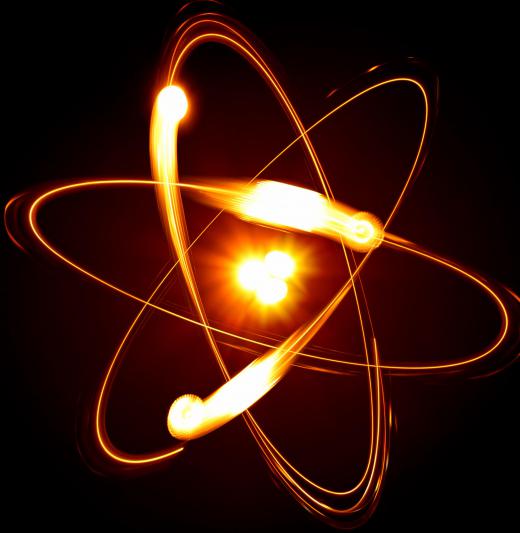What are Control Rods?
 Mary McMahon
Mary McMahon
Control rods are tools which are used to control the chain reaction which occurs inside a nuclear reactor. Left unchecked, the chain reaction can quickly spiral out of control, causing the reactor to explode. Control rods moderate the speed of the reaction, ensuring that it takes place in a way which is safe and sustainable. These rods are also subsequently part of the safety systems which are used to prevent reactor disasters.
As the name implies, a control rod is a rod made from a metal or metal alloy. It is usually built into a housing with other rods which are designed to be raised and lowered out of the reactor together. The composition of metal or metals in a control rod varies, depending on the type of reactor it is being used in. In all cases, the metals share the property of being able to absorb neutrons without undergoing fission.

Fission, of course, is the reaction which drives nuclear reactors. In fission, a nucleus absorbs a neutron and then splits, releasing heat, energy, and other neutrons. In a controlled nuclear reaction, the reactor staff want to keep the production of neutrons equal to the consumption of neutrons, with each fission reaction generating a single neutron to replace the one which was lost. In actuality, neutrons are produced at two to three times the rate they are consumed, which can quickly cause a runaway reaction.
This is where control rods come in. The control rods are lowered into the reactor to absorb some of the neutrons produced during fission reactions to keep the ratio under control. As the temperature rises, the rods are lowered, and as the temperature drops, the rods are raised to allow more fission reactions to occur. In an emergency where the reactor appears to be getting out of control, the rods are fully lowered into the reactor to shut it down altogether.
Also known as absorption rods, nuclear reactor control rods are designed to operate even during a crisis situation in which a human being is not available. With many reactors, the rods are poised over the reactor in a system which is designed to drop the rods if the reactor's temperature gets too high. In other cases, failsafe systems can be activated both within the reactor room and externally via remote systems. Staff also keep an ongoing eye on what is going on inside the reactor, monitoring fuel and control rods to replace as needed.
AS FEATURED ON:
AS FEATURED ON:











Discussion Comments
@miriam98 - Yes, control rods are definitely the fail safe mechanism, I would agree. There are other cases where they don’t function properly, like in the event of an earthquake.
The earthquake and subsequent tsunami that hit Japan in 2011 is one such example. It caused damage to their reactors. Even though the nuclear power control rods were lowered into the reactor, the temperature kept climbing, to the point where eventually some of the radiation seeped into the nearby waters and poisoned the sea life.
That was a terrible situation, almost another Three Mile Island. It’s one more reminder that nuclear power, while generally safe, can be a nightmare in the event of a natural disaster.
Knowing that control rods in a nuclear reactor are used to moderate the activity of the nuclear reaction is useful indeed, in my opinion.
I now understand why the famous Stuxnet virus was so devastating. This was a virus that was unleashed on Iran’s nuclear facility and it attacked the control rods of the nuclear reactors.
My understanding is that it attacked the software the maneuvered the control rods and it made the rods spin like crazy until they wore down.
Apparently this went undetected because the attack didn’t completely render the rods useless; it just made them more worn out. It was only later that the Iranian officials figured out what was happening.
The guy who made the virus was brilliant; he understand that if you can take out the control rods, you can mess up the whole operation.
Post your comments